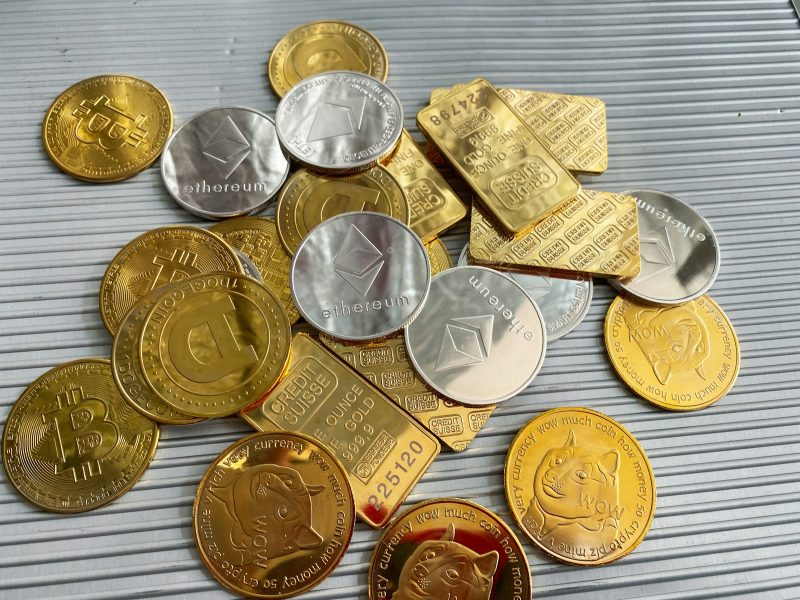Cryptocurrencies have evolved from experimental technologies to well-known investment vehicles in the rapidly changing world of digital finance. Thousands of digital assets, each with distinct characteristics and possible uses, now make up the cryptocurrency industry, which was originally controlled by Bitcoin alone. While this diversity presents investors with previously unheard-of opportunities, it also makes it difficult to decide which crypto heatmap should be included in investment portfolios. Seven well-known cryptocurrencies that have proven resilient and still have important roles in the larger cryptocurrency ecosystem are examined in this article. Even though the cryptocurrency market is still quite speculative and unpredictable, anyone thinking about entering this exciting financial frontier has to have a solid grasp of these top digital assets.
1. Bitcoin: The Digital Pioneer
The debut of Bitcoin emerged in 2009 through the mysterious creator Satoshi Nakamoto under a false name. The digital currency obtained a solution to its double-spending problem through blockchain which replaced traditional centralized monitoring systems. The main advantage of Bitcoin is its limited supply because 21 million coins will be the maximum number which can protect users from inflation and currency devaluation. The experimental technology of Bitcoin evolved from its original small-scale status to become a trillion-dollar asset class named “digital gold” which institutions across the board now recognize. In spite of its volatility, Bitcoin has shown remarkable resilience over several market cycles, regularly rising above sharp drops to set new price benchmarks. Since it is the most well-known cryptocurrency in the world, Bitcoin usually acts as a starting point for new investors.
2. Ethereum: The Programmable Blockchain
Beyond its core use as digital money, Ethereum marks a substantial advancement. The Ethereum network established programmable money through its implementation of smart contracts and self-executing code created by Vitalik Buterin and his co-founders in 2015. Developers used decentralized finance (DeFi) protocols to create totally new financial products as well as decentralized apps (dApps). Ethereum functions on both the power behind transactions and digital currency functions through its native coin Ether (ETH). The platform reached a technical milestone when it switched to proof-of-stake from proof-of-work in 2022 through its Merge update while promoting future scalability advances and boosting adoption potential.
3. XRP: The Bridge Currency
The XRP Ledger operates as a blockchain technology designed to process fast and affordable currency conversions and money transfers between international markets where XRP functions as its base digital currency. XRP represents the creation of Ripple Labs and differentiates it from other cryptocurrencies because it functions to enhance instead of replacing existing financial infrastructure. The token operates as a bridge currency which enables financial organizations to handle payments across borders with enhanced effectiveness when contrasting it to established systems. The transactional capability of XRP tops Bitcoin or Ethereum foundation layers because it can handle more than 1500 transactions per second and settles within an average time of 3-5 seconds. Its consensus method without mining requirements makes the system more energy-efficient and cuts down on environmental impact when compared to proof-of-work systems.
4. Tether (USDT): The Stability Anchor
The first and biggest stablecoin in the cryptocurrency industry is Tether, a digital asset that is anchored to an outside asset, usually the US dollar, to keep its value constant. Theoretically, each USDT token is equivalent to one US dollar that is held in reserve, giving traders and investors a practical means of protecting value amid market turbulence without completely leaving the cryptocurrency ecosystem. Tether has become essential to the Bitcoin trading infrastructure due to its stability feature that facilitates fast asset value transfers between volatile market components. As the most tradeable cryptocurrency, Tether provides multiple functions in digital markets because it helps users make cross-border payments and exchange transactions while offering stable currency units to people familiar with traditional money.
5. BNB: The Exchange Utility Token
The original Binance Exchange Token BNB transformed into a multifunctional currency that now enables the operation of one of the largest blockchain platforms beyond basic fee discount capabilities. BNB operates on numerous blockchain ecosystems and BNB Chain (formerly Binance Smart Chain) is among them with Binance acting as its creator and largest global cryptocurrency exchange. Reducing trading costs, taking part in token sales, making payments, and energizing transactions and smart contract activities across the BNB ecosystem are just a few of the utility functions that give the token value and contribute to positive BNB to USD price movements. Deflationary pressure is produced by the token’s regular “burning” process, which takes coins out of circulation permanently on a prearranged timetable and may be advantageous to long-term holders.
6. Solana: The Performance Powerhouse
The solution to blockchain system scaling issues led to the birth of Solana which presents efficient transaction speeds together with cost-effective rates suitable for high-throughput applications. Solana was established by Anatoly Yakovenko when he founded the network in 2017. The network executes thousands of transactions per second thanks to its proof-of-stake combined with a proof-of-history hybrid consensus system that retains decentralized security standards. Developers building decentralized banking applications along with NFT platforms and gaming and social media solutions have selected this performance profile particularly because it offers fast transactions without high fees. In addition to being the means of payment for transaction fees and smart contract operations, Solana’s native SOL token secures the network through staking.
7. USD Coin (USDC): The Transparent Stablecoin
USD Coin functions as a transparent stablecoin within the market because it implements regulated reserve verification to secure its 1:1 USD value stability. The USDC stablecoin operates through a joint venture between Circle and Coinbase while receiving independent audit reports of its reserve levels from accounting firms on a regular basis. Transparency in USD Coin has gained acceptance from institutions and regulated groups because they need additional proof of sufficient reserves. The stablecoin enhances cross-ecosystem cooperation because it functions throughout Ethereum along with Solana and Algorand blockchain programs.
Conclusion
Different methods of blockchain usefulness and value creation are represented by the seven cryptocurrencies under examination: Bitcoin, Ethereum, XRP, Tether, BNB, Solana, and USD Coin. Bitcoin remains the mainstay of the market and a form of digital gold. Ethereum’s programmable blockchain enables a vast network of decentralized apps. XRP focuses on very efficient institutional cross-border payments. Stability anchors like Tether and USD Coin make it easier to conduct market activities and use real-world financial applications. Solana pushes technological limits with its high-performance blockchain architecture, while BNB shows how exchanging utility tokens may create autonomous ecosystems.








